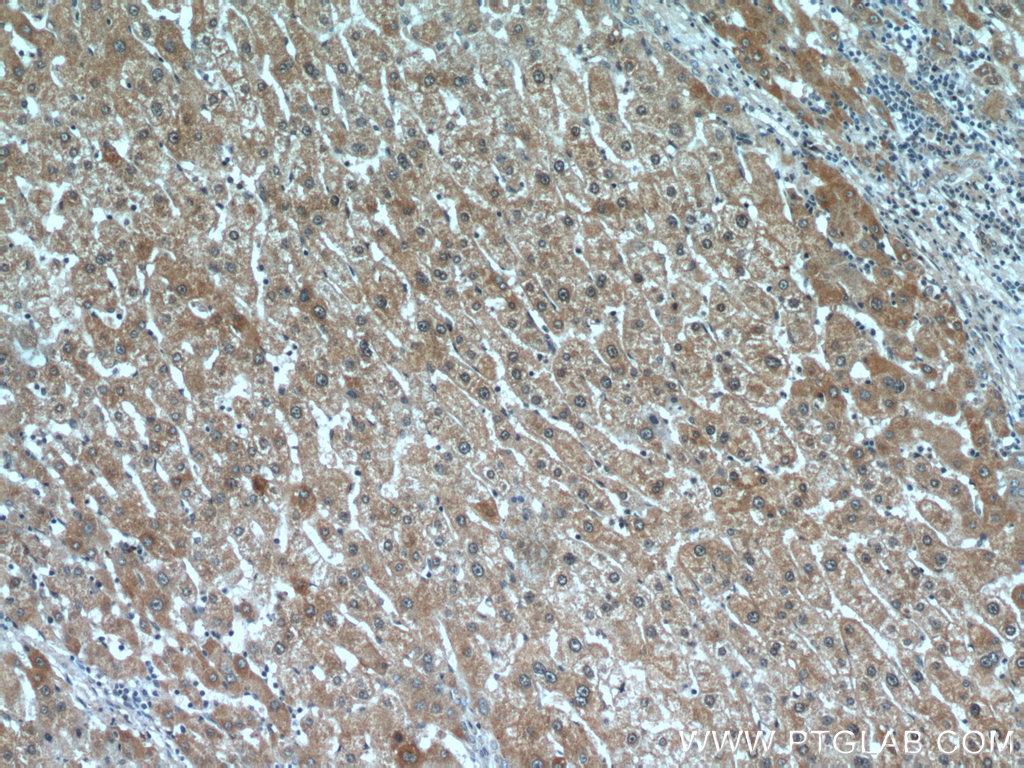C16orf70 Polyclonal antibody
C16orf70 Polyclonal Antibody for WB, IHC, ELISA
Host / Isotype
Rabbit / IgG
Reactivity
human, mouse, rat
Applications
WB, IHC, ELISA
Conjugate
Unconjugated
验证数据展示
经过测试的应用
| Positive WB detected in | mouse brain tissue, rat brain tissue |
| Positive IHC detected in | human liver cancer tissue Note: suggested antigen retrieval with TE buffer pH 9.0; (*) Alternatively, antigen retrieval may be performed with citrate buffer pH 6.0 |
推荐稀释比
| Application | Dilution |
|---|---|
| Western Blot (WB) | WB : 1:500-1:2000 |
| Immunohistochemistry (IHC) | IHC : 1:20-1:200 |
| It is recommended that this reagent should be titrated in each testing system to obtain optimal results. | |
| Sample-dependent, Check data in validation data gallery. | |
产品信息
20602-1-AP targets C16orf70 in WB, IHC, ELISA applications and shows reactivity with human, mouse, rat samples.
| Tested Applications | WB, IHC, ELISA Application Description |
| Tested Reactivity | human, mouse, rat |
| Immunogen | C16orf70 fusion protein Ag14576 种属同源性预测 |
| Host / Isotype | Rabbit / IgG |
| Class | Polyclonal |
| Type | Antibody |
| Full Name | chromosome 16 open reading frame 70 |
| Synonyms | C16orf6, C16orf70, lin 10, LIN10, UPF0183 protein C16orf70 |
| Calculated Molecular Weight | 422 aa, 48 kDa |
| Observed Molecular Weight | 48 kDa |
| GenBank Accession Number | BC004556 |
| Gene Symbol | C16orf70 |
| Gene ID (NCBI) | 80262 |
| RRID | AB_10694825 |
| Conjugate | Unconjugated |
| Form | Liquid |
| Purification Method | Antigen affinity purification |
| UNIPROT ID | Q9BSU1 |
| Storage Buffer | PBS with 0.02% sodium azide and 50% glycerol pH 7.3. |
| Storage Conditions | Store at -20°C. Stable for one year after shipment. Aliquoting is unnecessary for -20oC storage. |
背景介绍
The function of C20orf30 has not been widely studied, and is yet to be fully elucidated. The MW of this protein is 48 kDa, and our antibody specially recognises the 48 kDa protein.
实验方案
| Product Specific Protocols | |
|---|---|
| WB protocol for C16orf70 antibody 20602-1-AP | Download protocol |
| IHC protocol for C16orf70 antibody 20602-1-AP | Download protocol |
| Standard Protocols | |
|---|---|
| Click here to view our Standard Protocols |


